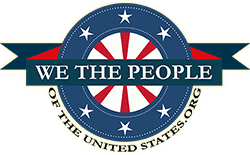MAKE SURE YOU’RE BUYING PRODUCTS MADE IN THE USA
We SHOULD be concerned where stuff is manufactured. “Assembled in the USA” does not mean that most parts – if any – were made in the USA. Too often we have no choice.
ACE HARDWARE, for example – Made in the USA – Very Encouraging
Costco sells Goodyear wiper blades for almost half the price that you will pay on the outside and they are made in
the U.S.A. Read and do the following.
Unfortunately, our politicians and top CEOs have pushed for trade to China and Mexico for years so Americans are now out of work.
Did You Know that there is no electric coffee maker made in the US and that the only kitchen appliances made in the USA is Viking? This information came from the “a report” by Diane Sawyer. Hopefully this has changed or will soon!!
I DIDN’T KNOW HALLMARK CARDS WERE MADE IN CHINA That’s why I don’t buy cards at Hallmark anymore, They are made in China and are more expensive! I buy them at Dollar Tree – 50 cents each and made in USA.
I have been looking at the blenders available on the Internet. Kitchen Aid is MADE IN THE USA. Top of my list
already…
Yesterday I was in Wal-Mart looking for a wastebasket. I found some Made In China for $6.99. I didn’t want to pay that much so I asked the lady if they had any others. She took me to another department and they had some at $2.50 made in USA. They are just as good. Same as a kitchen rug I needed. I had to look, but I found some Made in
The USA – what a concept! – and they were $3.00 cheaper.
We are being brainwashed to believe that everything that comes from China and Mexico is cheaper. Not so.
Start looking, people. In our current economic situation, every little thing we buy or do affects someone else – most often, their job.
My grandson likes Hershey’s candy. I noticed, though, that it is now marked “Made in Mexico.” I don’t buy it
anymore. MY NOTE: My Special Dark Chocolate says nothing about where made. There are plants in Brazil and Mexico and maybe Canada. https://en.wikipedia.org/wiki/ The_Hershey_Company
My favorite toothpaste Colgate is made in Mexico …. now I have switched to Crest.
You have to read the labels on everything.
This past weekend I was at Kroger. I needed 60W light bulbs and Bounce dryer sheets. I was in the light bulb
aisle, and right next to the GE brand I normally buy — was an off-brand labeled, “Everyday Value.” I picked up both types of bulbs and compared them: they were the same except for the price .. ..the GE bulbs cost more than the Everyday Value Brand, but the thing that surprised me the most was that that GE was Made in MEXICO and the Everyday
Value brand was made in – you guessed it – the USA at a company in Cleveland, Ohio.
It’s way past time to start finding and buying products you use every day that are made right Here.
So, on to the next aisle: Bounce dryer sheets… Yep, you guessed it, Bounce cost more money and is made in Canada.
The Everyday Value Brand cost less, and was MADE IN THE USA! I did laundry yesterday and the dryer sheets performed
just like the Bounce Free I have been using for years, at almost half the price.
My challenge to you is to start reading the labels when you shop for everyday things and see what you can find that is Made In the USA – The job you save may be your own or your neighbor’s!
Let’s all start buying American, one light bulb at a time!
Stop buying from overseas companies – you’re sending the jobs there.





